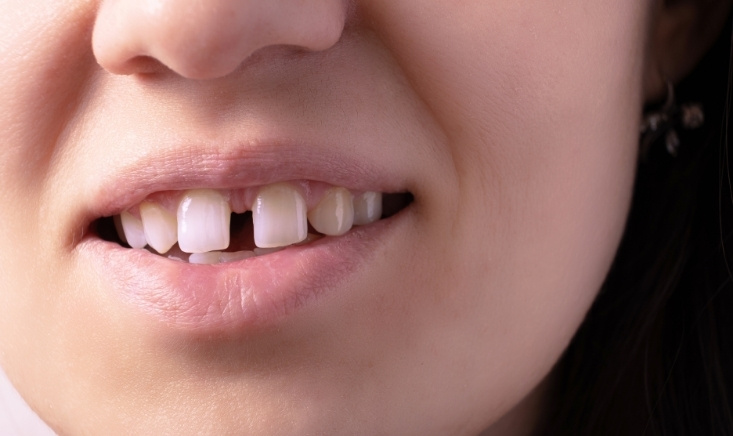What Is The Reason For A Teeth Gap?

Do you have gaps in your teeth? Are you troubled by the gaps?
Teeth gaps are a common dental occurrence. The reasons can be multiple – like genetic traits, poor oral habits, gum disease, undersized teeth, etc. However, no need to worry about the gaps too much. Just like there are multiple factors behind it, there are multiple solutions as well.
In this blog, you will only learn more about this.
What Causes Teeth Gaps?
Genetic Traits
Your genetics affect how your teeth and jaw are developed. If your family has a history of teeth gaps, you might be more likely to have them, too. Sometimes, people also inherit a larger jaw and smaller teeth. This can naturally create extra space between them.
Teeth That Are Missing or Undersized
If you are born with missing teeth (congenitally absent teeth), you might develop noticeable gaps. Others may have teeth that are smaller in size for the available space in the jaw. This condition prevents them from fitting together snugly. In both cases, extra space leads to gaps in teeth.
Overgrowth of the Labial Frenum
The labial frenum is the small tissue connecting the upper lip to the gums. When this tissue is too large, it pushes your front teeth apart and prevents them from closing together.
Thumb Sucking and Oral Habits
Prolonged thumb sucking or the use of the pacifier can also push the front teeth forward, creating a gap. Additionally, if your tongue presses against your front teeth while swallowing, you might develop issues related to spacing.
Gum Disease and Loss of Bone
Periodontal disease can make the supporting structures of your teeth weak, which leads to shifting and gaps in teeth. When the gum infection progresses, it causes the teeth to separate or loosen.
Orthodontic Issues Can Lead to Teeth Gaps
Some gaps develop due to natural misalignment or improper eruption of teeth. Here comes orthodontic treatments. Braces and Invisalign can help close spaces by shifting teeth into their proper places.
How to Treat Teeth Gaps?
Orthodontic Solutions
- Braces and Invisalign are some of the best orthodontic solutions for closing teeth gaps.
- Invisalign gives you a discreet and comfortable way to correct your spacing issues without the hassle of traditional braces.
Dental Bonding or Veneers
- Bonding means applying tooth-colored resin to close gaps in your teeth.
- Veneers are thin shells that are placed on the front of teeth to close gaps and restore a natural look.
- Both options provide quick, effective cosmetic results.
Frenectomy
- When your gaps are caused by an oversized frenum, your dentist gives you this option.
- This is a simple surgical procedure that removes the excess tissue and allows the front teeth to shift naturally.
Dental Implants or Bridges
- If a gap results from missing teeth, your options are dental implants or bridges. These are long-term solutions.
- Implants replace missing tooth roots, while bridges fill spaces with artificial teeth.
A teeth gap can be a natural characteristic or a sign of an underlying issue. If the gap is affecting your confidence or oral health, consult with a dental professional who can guide you toward the best approach.
Regular checkups and early intervention can prevent small gaps from becoming bigger concerns, ensuring a healthy and confident smile.



